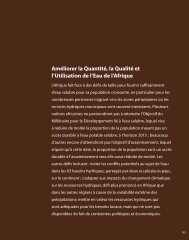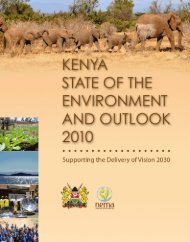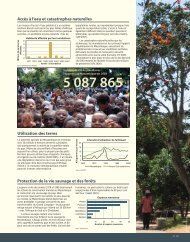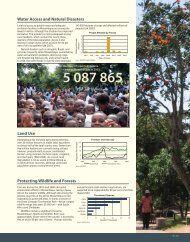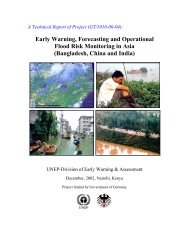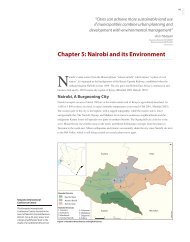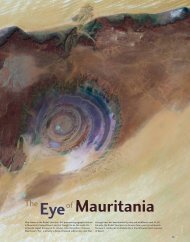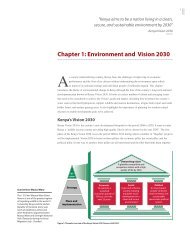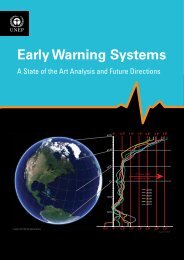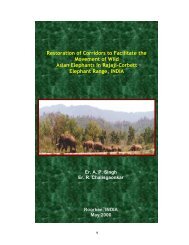Uganda Atlas of Our Changing Environment - GRID-Arendal
Uganda Atlas of Our Changing Environment - GRID-Arendal
Uganda Atlas of Our Changing Environment - GRID-Arendal
Create successful ePaper yourself
Turn your PDF publications into a flip-book with our unique Google optimized e-Paper software.
Dawn at the Mt. Elgon Ranges (2008)<br />
Mt. Elgon Benet Area<br />
The current aim <strong>of</strong> the project is to “promote community<br />
development and conserve Mount Elgon’s ecosystem<br />
for present and future use” using a “community<br />
based resource management approach” involving the<br />
participation and empowerment <strong>of</strong> local communities<br />
in the development process (MECDP, 1995). Working<br />
in conjunction with MENP, park regulations have been<br />
formulated with reference to the needs <strong>of</strong> local people<br />
and their resource use levels, and enforced in conjunction<br />
with a comprehensive extension programme. Collaborative<br />
management was piloted in two parishes, with the aim<br />
<strong>of</strong> extending it to all forest-adjacent parishes before the<br />
project ends in 2000.<br />
IUCN have commissioned a number <strong>of</strong> resource<br />
inventories and assessments. Katende et al. (1990)<br />
carried out a biodiversity inventory for woody perennials<br />
and birds. A Land Mapping and Biodiversity Survey <strong>of</strong><br />
Mount Elgon National Park was carried out in 1993 to<br />
assist the development <strong>of</strong> a long term management plan<br />
(van Heist, 1994). The survey described numerous aspects<br />
<strong>of</strong> the mountain with an emphasis on plant biodiversity. A<br />
“resource use assessment” was commissioned for the same<br />
purpose detailing resource use by people groups across the<br />
mountain through a series <strong>of</strong> semi-structured interviews<br />
and group discussions (Scott, 1994).<br />
88<br />
A number <strong>of</strong> forest dwellers still live in the park.<br />
They are primarily pastoralists, practising subsistence<br />
agriculture in gardens next to their houses. Prior to<br />
cultivation, the areas are burnt and cow dung is added<br />
to the soil to fertilise it. The gardens are then planted<br />
for two or three years. The high altitude prohibits the<br />
production <strong>of</strong> maize, but potatoes (Solanum tuberosum)<br />
and matoke (Musa sapientum) are widely grown. When<br />
the evictions occurred, many <strong>of</strong> these gardens and<br />
grazing areas around them were abandoned. Immediately<br />
after the 1990 evictions the forest was lacking the dense<br />
shrub layer characteristic <strong>of</strong> East African upper montane<br />
forests (Richards, 1996) and extensive areas <strong>of</strong> top-soil<br />
were exposed due to the activity <strong>of</strong> cattle (Katende,<br />
A. pers. comm.). The current pastoralists concentrate<br />
grazing activity on the Benet grasslands which meander<br />
through the forest at an altitude <strong>of</strong> approximately 2,500<br />
- 2,800 m. It is not certain whether the Benet grasslands<br />
have always been open grassy areas (van Heist, 1994)<br />
but they are maintained as artificial climax by heavy<br />
grazing. A number <strong>of</strong> cattle graze in the forest, but they<br />
are fewer in number than before the evictions. Although<br />
the Ndorobos live illegally in the area they are tolerated<br />
by the National Park authorites who are currently deciding<br />
whether to relocate them.<br />
NEMA 2008



